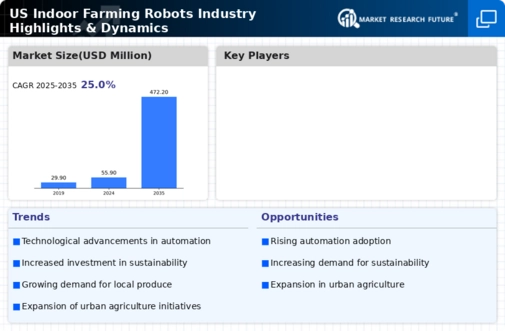US Indoor Farming Robots Market Summary
The US Indoor Farming Robots Industry is projected to experience substantial growth from 55.9 million USD in 2024 to 472.2 million USD by 2035.
Key Market Trends & Highlights
US Indoor Farming Robots Industry Highlights & Dynamics Key Trends and Highlights
- The market is expected to grow from 55.9 million USD in 2024 to 472.2 million USD by 2035.
- A compound annual growth rate of 21.4 percent is anticipated from 2025 to 2035.
- The increasing demand for sustainable agricultural practices is likely to drive market expansion.
- Growing adoption of automation technology due to the need for efficient resource management is a major market driver.
Market Size & Forecast
| 2024 Market Size | 55.9 (USD Million) |
| 2035 Market Size | 472.2 (USD Million) |
| CAGR (2025-2035) | 21.4% |










Leave a Comment